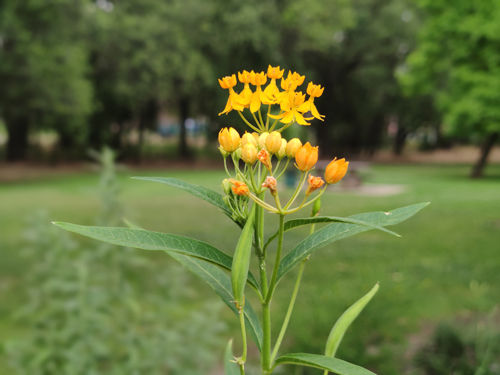Invalid input. Special characters are not supported.
Your memories are irreplaceable. Money can purchase a new TV, house or even an island. But cash can’t buy the tingle you felt on your first kiss. It can’t capture the smiles of grandparents who have passed away. It can’t trigger the joy of holding your child for the first time and knowing that your life has changed forever.
That’s the stuff of memories — and the province of photos. Our brains are imperfect record keepers. We rely on photos to bring back the details of our lives and fill in the pixels around our fuzzy recollections. Yes, you really did have that ridiculous haircut in high school. Maybe seeing that again makes you nostalgic about your awkward phase. Whatever the sentiment, that yearbook photo makes you feel something.
That’s why we hear stories of parents escaping from burning homes with a child under one arm and a photo album under the other. Thankfully, preserving images is easier in the digital age — as is taking better images. Gone are the bulky point-and-shoot cameras, rolls of expensive film and trips to the convenience store for developing. Today, we shoot on smartphones capable of storing thousands of images, never mind cloud storage that makes capacity essentially infinite. In less than a minute, smartphone owners can shoot, edit and share quality images on social media, the modern photo album.
Better photos can mean better memories, or at least more accurate memories. Serious photographers cart around expensive digital single-lens reflex cameras (better known as DSLRs), swap lenses and tinker with complicated aperture and speed settings. Of course, professional photographers and enthusiasts will prefer their DSLR for photo shoots. The highest quality professional images still come from DSLR cameras. But what about capturing the precious spur-of-the-moment experiences of daily life? What about those of us without professional photography training or skills? Can our smartphones deliver near professional-level photographs?
Today, top-end phones such as the Xiaomi Mi 10 Pro™ and the Motorola edge+™ have multiple lenses that switch mid-zoom without the user ever noticing. Both employ what’s known as “computational photography,” which basically means smart cameras automatically apply settings to create better photos. Algorithms read the light, depth of field and other factors to adjust settings that used to require an expensive digital camera and a skilled operator. And these cameras, guided by software, snap handfuls of images and select the best one, cutting the wheat from the chaff without users needing to hit the delete button over and over.
That’s just a small sample of how far camera phone technology has come in a short time, helping turn you into a better photographer without a DSLR camera, says Rahul Desai, Motorola’s director of Software Product Management.
“We’ve all heard the old adage that the best camera is the one in your pocket, and today it’s your smartphone that is always in your pocket,” he says. “People are expecting multiple cameras and expecting to capture multiple images, very quickly, and not doing any processing on their end.”
Modern smartphones’ camera features far exceed those of even a few years ago. The Xiaomi Mi 10 Pro and Motorola edge+ both boast software not typically available on DSLRs, including night modes, panoramic settings, document modes, and the ability to stack multiple images to create the best photo. Both also use artificial intelligence (AI) to figure out what kinds of images its user prefers.
 Infographic: What happens when you take a photo with a smartphone
Infographic: What happens when you take a photo with a smartphone
The result, Chang Cheng, Vice President of Xiaomi Group says, is quickly boosting layperson photographer’s skills.
“The average user does not need to know what kind of light or what kind of composition is needed to take a good photo,” Cheng says. “Instead, they can easily capture a high-quality photo with one tap.”
That camera in your pocket is a technological marvel. Getting those low-light photos or extreme close-up shots requires state-of-the-art camera hardware and super-smart software. Most importantly, though, you need the brain and the body to work in tandem. Here’s how Motorola and Xiaomi smartphone cameras do it.
With more lenses on your smartphone, you don’t need all the photography gear!
It’s easy to take a smartphone’s thin profile for granted. The Motorola edge+ has three lenses. The Xiaomi Mi 10 Pro has four. Both offer sensors large enough to enable users to take high-quality photos in low light environments. Smartphones used to take good photos in a limited range of depths. Today, the edge+ can take panoramic landscape shots from afar or close-ups within 2 centimeters of subjects.
 Low-light photographs of a bridge at night, taken with a 2014 flagship smartphone (top) and the 2020 Motorola edge+ (bottom), illustrate how larger sensors and computational photography techniques are making it possible to capture shots that were impossible just six years ago.
Low-light photographs of a bridge at night, taken with a 2014 flagship smartphone (top) and the 2020 Motorola edge+ (bottom), illustrate how larger sensors and computational photography techniques are making it possible to capture shots that were impossible just six years ago.
Some called it gimmicky when phone makers started equipping devices with multiple lenses several years ago, says Matt Biggerstaff, Motorola’s director of Image Hardware Engineering. That notion quickly died as users embraced the ability to carry the equivalent of an entire camera bag in their pocket.
“Now, phones are modeled after the DSLR where you have different lenses and multiple focal lengths,” he says. “They all do different things, and they are all really important for capturing any image that’s in front of you.”
More memory leads to better images — faster!
More demanding camera functions require more DRAM to run shooting and editing applications smoothly. That’s where Micron comes in. The Xiaomi Mi 10 Pro and the Motorola edge+ both boast up to 12 gigabytes of Micron’s next-generation low-power DDR5 DRAM (LPDDR5), more than some desktop computers, giving these phones the computational muscle to incorporate AI and other sophisticated algorithms into the cameras. The need for more and more DRAM in phones has continued to increase with the advent of 5G connectivity. From just 2018 to 2020, the amount of low-power DRAM in the highest-end flagship phones has doubled from 8GB to 16GB.
Micron LPDDR5 DRAM is 50% faster than previous generations while consuming up to 20% less power, opening the door for better cameras and smarter programs.
“Xiaomi was among the first to use LPDDR5 memory, which lays a strong technical foundation … providing an efficient and convenient user experience,” Cheng says. “Meanwhile, thanks to the continuous craze for Xiaomi’s flagship products, Micron’s brand and its LPDDR5 memory have been widely recognized as flagship technology.”
The Motorola edge+ reserves a portion of its memory specifically for its cameras and camera operations, ensuring the user experience doesn’t bog down under the tremendous amounts of data processing.
“We’re pinning memory so things are a lot snappier,” Biggerstaff says. “Sometimes we’re stacking up to 12 frames, with a native resolution of 27 megapixels. That’s pretty intensive from a DRAM perspective. This way, users will not only get the best image, but they’ll get it as quickly as they can.”
5G will put the most robust imaging software in the cloud, freeing up your smartphone
Thus far, the physical size of smartphones has been their limiting factor. But it’s expected that won’t be the case when 5G connectivity becomes mainstream in the near future, enabling phone creators to move the hardest digital work to the cloud instead of housing it on their devices. (The Motorola edge+ and Xiaomi Mi 10 Pro already have 5G capability.)
Phones have finite space and battery life. Even with low-power DDR5 DRAM, phones are not yet supercomputers. Pairing smartphones with the cloud and 5G networks, on the other hand, can devote as much space, juice and computational heft as service providers allot to them. 5G promises to be up to 20 times faster than 4G networks, increasing the amount of data flowing in and out of the cloud at 20 gigabits per second, which means the next generation of computational photography can use the power of the cloud more efficiently. So Motorola plans to be able to stack those 12 images without drawing on your phone’s resources — or perhaps stack more in the future as part of more complex photo applications.
 Computational photography techniques let you take colorful, dynamic photos of flowers at your favorite park. The photo on top was taken with a 2014 flagship phone. Note that the highlights are overexposed, and the lightly blurred background (bokeh) was achieved through traditional mechanical means. The photo on the bottom ― taken with a 2020 Xiaomi Mi 10 Pro ― was taken with computational photography techniques that used high dynamic range (HDR) methods to combine multiple images, achieve optimal exposure and artificially blur the background to focus on the flower.
Computational photography techniques let you take colorful, dynamic photos of flowers at your favorite park. The photo on top was taken with a 2014 flagship phone. Note that the highlights are overexposed, and the lightly blurred background (bokeh) was achieved through traditional mechanical means. The photo on the bottom ― taken with a 2020 Xiaomi Mi 10 Pro ― was taken with computational photography techniques that used high dynamic range (HDR) methods to combine multiple images, achieve optimal exposure and artificially blur the background to focus on the flower.
5G will open the AI floodgates for computational photography, Cheng says. Algorithms on today’s phones do plenty of smart stuff. The phones of tomorrow will truly tailor functions to each user. That’s the power AI unlocks.
“AI operations that cannot be completed or are difficult to complete on the phone itself can be transmitted to the cloud,” Cheng says, “with the help of a high-speed and low-latency 5G network and more powerful computing and faster transmission, thus taking the reach of mobile photography to a higher level.”
AI features like image straightening and cropping suggestions based on the rule of thirds, a core concept for understanding photo composition, are available in phones today. If you’re like most people, you’ve taken terrible photos of beautiful fireworks. Computational algorithms can recognize difficult photo environments and adjust settings so those images shine.
Desai explains, “[With AI] we can intelligently figure out if this scene is of fireworks or not... Night vision stacks multiple frames to give you a brighter image at night, but we want to make sure that doesn’t trigger when you’re taking photos of fireworks, because that would be a mess. So there’s a priority algorithm that’s looking at that in the background.”
But that’s just the start, says Desai. The cloud is expected to propel computational photography to new heights in the coming years.
“You can take an entire image and send it up to the cloud to make adjustments,” says Desai. “Users don’t always prefer natural photos. They prefer more vibrant, some might even say artificial, things that make images pop. We can do that in the cloud.”
Remember the special things — with computational photography
Those old photo albums are records that keep memories alive. Photos of our grandparents or our children help us retrace the steps in our lives. Those connections to the past are precious … even if, in many cases, those photos aren’t very good. The exposure was off, a relative was cut out of the frame, a person blinked when the shutter snapped, or the photo has yellowed with age. We’ve accepted imperfect photos because most of us aren’t great photographers and because the medium physically degrades over time.
 Portrait mode uses computational photography techniques that artificially blur the background to focus on the people we want to remember. The photo on top was taken with a 2014 flagship smartphone that was manufactured before portrait mode became a standard feature. The photo on the bottom was taken with a 2020 Xiaomi Mi 10 Pro in portrait mode.
Portrait mode uses computational photography techniques that artificially blur the background to focus on the people we want to remember. The photo on top was taken with a 2014 flagship smartphone that was manufactured before portrait mode became a standard feature. The photo on the bottom was taken with a 2020 Xiaomi Mi 10 Pro in portrait mode.
Digital files, backed up in the cloud with metadata about dates and locations, won’t burn in fires. Computational photography will make all of us competent photographers, meaning Grandma’s eyes will be open in that nice shot on her porch at dusk, the way we want to remember her.
Smartphones will not mean we lead bigger, more fulfilling lives. That part is still up to us. But smartphones and advancing technology will ensure we can draw from better images to help us recall the moments of our lives. That’s irreplaceable.
Comparison photographs were captured by Tom DiGiurco. Motorola and Xiaomi are registered trademarks of their respective brands. Micron Technology has no ownership stake in Motorola or Xiaomi, though Micron does conduct business with both companies individually. Quotes from Motorola and Xiaomi are the views and opinions of those individuals quoted and do not necessarily reflect the views and opinions of Micron Technology or their respective companies. 5G networks may not be available in all areas.
